A DIFFERENT KIND OF LEARNING LOSS
Student behavior at every grade level has changed over the last three years. Here’s how educators have adjusted the way they teach.

The young students are struggling to manage their emotions. The older ones are unmotivated even by the most creative of assignments. So many are grappling with how to read social cues, maintain focus, or resolve conflict.
From preschool teachers to college professors, veteran educators across the region are witnessing a learning loss not measured by math and reading tests — and it’s showing up in regressed behaviors usually present at younger ages, or in increased anxiety or withdrawal.
Is this happening the same way across the board? How are teachers adjusting to the new normal, and do they think this is the future normal?
These are some of the questions we wanted to answer by surveying more than two dozen educators who have been in classrooms for more than 15 years. Altogether, their experience sheds light on the ways children continue — even halfway through the 2022-23 school year — to be affected by now-gone pandemic restrictions, as one teacher said, “by no fault of their own.”
But also, their stories show how educators and students are overcoming those setbacks.
Below are some of their answers, edited for length and clarity.
Preschool
Aliya Hart
Lead pre-K teacher at Early Childhood Program at Germantown Jewish Centre, 24 years in education
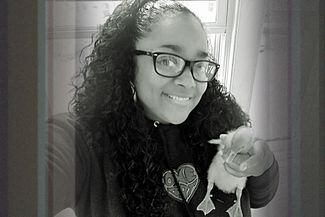
What challenging behavioral changes have you seen in your students since the pandemic?
Children are more emotional, have higher anxiety, and often react physically. A project with five children working together to build a house turns into three children arguing over the color that goes on the roof, one child crying because someone said they can’t play, and one child knocking the whole structure down because they were mad! Using words and cooperating instead of using hands is a constant struggle.
How have you modified your teaching to accommodate, build upon, or manage these behavior changes?
I started doing meditation with my class every day. This has been the best addition to our day in all my years of teaching. The children are focusing, relaxing, learning to concentrate, practicing breathing techniques, using their imagination, and saying positive affirmations. There are times when a child is upset or wants to be alone. They go meditate.
Doris Young
Lead infant teacher at Early Childhood Program at Germantown Jewish Centre, 20 years in education

What challenging behavioral changes have you seen?
I can see a difference in the infants now and the infants before the pandemic. The infants today have a delay in the motor skills and speech. The older preschoolers have trouble following directions and can’t control their emotions. Even with the infants, you can see that being home with their families had made them fear outsiders.
What about positive changes?
There seems to be an awareness surrounding spending time with their family and building friendships. They appear to be more aware of sharing germs.
Elementary school
Kathy Baer
Kindergarten teacher at Mary C. Howse Elementary, West Chester Area School District, 35 years in education
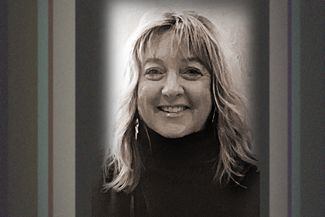
What challenging behavioral changes have you seen?
There’s a famous saying I always use with my parents about how important kindergarten is, from Plato: “The beginning is the most important part of the work.” And so many of my kids coming to kindergarten, they lost that beginning.
These kids really lost [executive functioning], the process of how we learn, over what we learn — like staying focused, executing a task. That’s the foundation of development, to be able to make reasonable decisions, organize and read social cues. ... Personal needs have suffered: going to the bathroom, tying shoes, carrying your own bookbag.
How have you modified your teaching?
I am embedding more purposeful play activities that research shows builds executive function, collaboration, communication, critical thinking, creativity, and confidence. … I find myself using our social-skills weekly program on a daily basis to help students learn to regulate their emotions.
What are your hopes or fears about how these behaviors will play out?
My fear is that these kids will always be labeled “those kids from the pandemic” for the rest of their lives by no fault of their own. My hope is that “those kids from the pandemic” will continue to grow stronger academically, emotionally, and socially, but will be better prepared for whatever life throws at them because of their struggles.
Nicole Moore
Principal of Indian Mills School, Shamong Township School District, N.J., 31 years in education
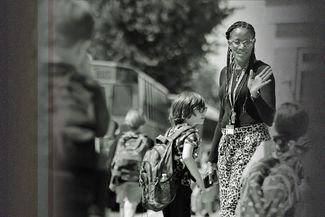
What challenging behavioral changes have you seen?
The children had to learn how to get along again. ... They just did what they wanted when they wanted, such as getting up and walking out of the classroom or not doing homework assignments. There were lots of arguments over silly things. They weren’t just necessarily happy children. You felt like something was weighing them down.
We have so many 504s [plans to accommodate children with an identified disability] for anxiety that we never had before. I’ve never seen so many anxious kids in my life.
What about positive changes?
Our kids are probably some of the most empathetic and kind. They help without being asked. They are really some of the nicest and sweetest kids I have had the pleasure of working with. ... When a little boy from Peru seeking asylum arrived into one classroom, the kids greeted him with a boisterous Buenos días! It made me cry. It was like he had known them his whole life.
Kimberly Smith
Reading specialist at Wyncote Elementary School, Cheltenham School District, 26 years in education
What challenging behavioral changes have you seen?
They do not have the same stamina as students the same age had before the pandemic. These learners also are showing more deficits in fine motor skills such as holding a pencil, cutting with scissors, coloring.
What about positive changes?
Many more students are sharing their feelings and needs with school personnel. They are advocating for themselves.
How have you modified your teaching?
Students need encouragement to be listeners when someone else is sharing their ideas. For some groups, we need to make things concrete like passing an object around and the person who holds the object is the one who has the “floor.” ... We demonstrate what a good listener looks like and sounds like.
Adam Bloom
Third-grade teacher at Edgewood Elementary School, Pennsbury School District, 30 years in education

What challenging behavioral changes have you seen?
As a third-grade teacher, I normally am able to get a majority of students that are fairly independent workers. I found right after the pandemic that many of the students were used to having parents hold their hands through doing assignments and tended to rely on them to help them do the work. It is better now, but I still have a few students — and parents — that needed to be shown how capable ... their child is.
How have you modified your teaching?
Students have now come to me with writing issues: pencil grip, spacing, formation of letters, etc. I’ve had to reteach those concepts and make them aware that their writing has to be able to be read by others.
Subscribe to The Philadelphia Inquirer
Our reporting is directly supported by reader subscriptions. If you want more journalism like this story, please subscribe today.
Middle school
Gemayel Keyes
Middle-grades special-ed teacher resident, Spruance Elementary, Philadelphia School District, more than 16 years in education

What challenging behavioral changes have you seen?
It’s been hard getting them back into routines. I’m seeing more defiant behavior, and it’s harder to get them on task, because they spent so much time outside of the typical classroom setting.
More children are going to sleep in class. They were used to being up late at night because they didn’t have to get up early. Now, they’re very tired, and they’re mad because they’re up, and sometimes they don’t want to work as hard as they would otherwise.
What about positive changes?
Not being around each other for so long made them appreciate the community bond that they had. In my school, we lost a couple of people due to COVID. That made us appreciate that we made it through, we’re still here.
How have you modified your teaching?
I am a lot more understanding, a lot more mindful of the students’ needs; they need a little bit more than they did before COVID. I’m asking, “How can I help you through this?” I’m doing that more than I would usually.
Marisol Rivera Rodriguez
Principal of Juniata Park Academy, a K-8 school in the Philadelphia School District, 20 years in education
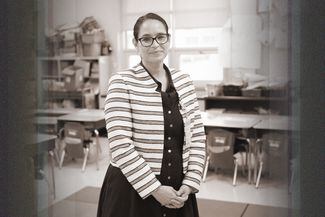
What challenging behavioral changes have you seen?
In the upper grades, we’re seeing more introverted behaviors — students shutting down, being less verbal, less willing to share with adults than in previous years. Another increased challenge has been with ... social media. When kids went virtual, that’s all they had. We know there’s an addiction.
What about positive changes?
Students’ ability to navigate technology has been a benefit. Even the kindergarteners can do a lot more than they have in the past — they know their password, they know how to manipulate a mouse. Technology has helped our older students develop some executive-functioning skills, just being able to organize and task-manage. They keep on top of their grades more, through Google Classroom. And it’s had the benefit of bringing more parent involvement — now we can do virtual meetings, and that’s helped.
How have you modified your teaching?
We now use [a software monitoring system] to manage what sites kids are on. We are also a Yondr school. [The company provides magnetic pouches for students to lock up their phones.] That’s helped tremendously to be distraction-free during the day.
We’re more intentional about how we start and end our day. We do morning meetings and closing circles — what are the goals today, what did we do? It’s a checkout before students go home. It’s been helpful to address challenges.
What are your hopes or fears about how these behaviors will play out?
Our students are so resilient. I am hopeful that they are going to overcome their social-emotional needs, as long as we are intentional about building those skills and creating those spaces in our schools.
Sarah Stout
Principal of Black Rock Middle School, Lower Merion School District, 20 years in education
What challenging behavioral changes have you seen?
Our school is fifth through eighth grade, and so my fifth graders were in second grade when normalcy sort of ended. So teaching kids routines and expectations — that just didn’t happen. At the beginning of the year with fifth grade, lunch seemed more challenging than I would have expected, like getting everyone’s attention. And it was like, “Wait, they haven’t done normal cafeteria since second grade.”
What about positive changes?
I said we’re going to be really tight on cell phones, putting them away for the day … no electronics at lunch. We had like, 99% immediate compliance. I even had some kids thank me. They said, “This takes away the pressure from having to be on our phone.”
[At recess] we have kids that play checkers and Connect Four. Outside we have big Jenga, VR games, and basketball. … I think they have an increased appreciation when we can do things that are fun.
What are your hopes or fears about how these behaviors will play out?
I’ve seen some social gaps in kids independently being able to solve problems with each other. And some communication gaps with how they communicate with one another. For some kids, it’s just a matter of spending time acknowledging that, thinking about it, working on some strategies for that, but for some other kids, it’s causing some pretty significant frustration for them. Because it’s a lot.
High school
Peter Coyle
Art teacher, West Philadelphia High, Philadelphia School District, 15 years in education
What challenging behavioral changes have you seen?
It’s very difficult for them to concentrate for long periods of time — 10 minutes at a time. And this is for many, many of the kids.
There’s a lack of creativity. Projects that traditionally get students very excited about, they’re not excited about. We’re doing a unit about stencils, and the end product is you can make your own T-shirt. So far, out of 100 kids, only three have told me they’re going to bring in shirts. They’re not excited to come up with a design. They say, “What’s the easiest thing I can do?” That’s new.
How have you modified your teaching?
To teach a high school lesson, I have to build them up to it with an elementary school project and a middle school project. I found that I was making assumptions about skill levels and experiences that were wrong. I’ve had kids that I’ve had to teach how to use scissors to cut something other than a straight line.
Jamison Fort
History teacher, Charles Brimm Medical Arts High School, Camden City School District, 15 years in education.

What challenging behavioral changes have you seen?
These kids are stressed like the adults were. It’s just adults have a slightly better handle on how to deal with stress. For the first week of school, we had six bomb threats, kids were doing it — all symptoms of stress. In the past where you might check a behavior, they might try to argue with you. Now they shut down, mumble to themselves, curse. Now the go-to is “F it. I don’t care.”
What about positive changes?
They’re using clinical terminology, being more socially aware of mental health and social emotional well-being. They understand they have gone through something traumatic.
How have you modified your teaching?
I spend more time paying attention to what’s going on, family life, backstory. I’ve tried to create outlets for them to release frustration. When they walk in my room, it’s going to be peace, tranquil. I even created a photography club, and students can come in during lunch, grab a camera, and go take photos.
What are your hopes or fears about how these behaviors will play out?
I feel like major disruptions create opportunities to think outside the daily grind. Tough times literally make you stronger. I’m expecting them to do amazing things.
Paul DeSipio
Physics teacher at Cheltenham High School, Cheltenham School District, 27 years in education
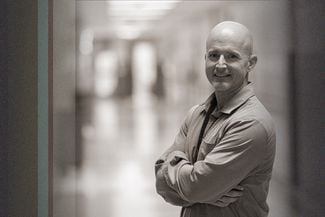
What challenging behavioral changes have you seen?
The most notable behavioral change is social withdrawal. Previously, the vast majority of students would prefer to work on activities in pairs or groups. Now, I am seeing just the opposite. Students more than ever are wanting to just put in earbuds and work on their own.
What about positive changes?
I feel like students are more open-minded now to trying things that are maybe a little bit out of their normal comfort zone.
How have you modified your teaching?
My classroom activities have to be more engaging and diversified. Trying to find a balance of letting them do their own thing and discover things for themselves while at the same time having a natural social element that is fostering and not forced.
Larry Abrams
English teacher, Lindenwold High School, Lindenwold Public Schools, 22 years in education (retired in December to run Book Smiles)
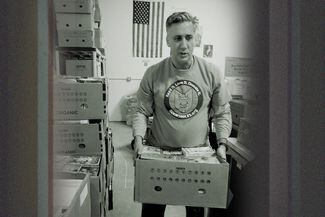
What challenging behavioral changes have you seen?
I have definitely seen students wandering the halls, more restlessness. Kids are having a harder time doing classwork than they did. They will look for opportunities to leave the class, claiming they need to go to the bathroom.
How have you modified your teaching?
I give less homework ... not wasting time with unnecessary perfunctory handouts. Kids need to unwind at home like we do.
Higher education
Sam Richards
Professor of sociology, Pennsylvania State University, 38 years in education
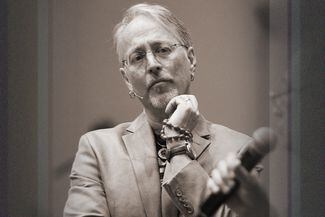
What challenging behavioral changes have you seen?
I am certain that the students are more disillusioned and burned out after having muddled their way through the pandemic. Almost across the board ... it appears to me as though it cast a “I hate school” spell over them. The attention spans of my students appear to be even shorter than what they were pre-pandemic, and I have a more difficult time getting them to focus compared with three years ago.
What about positive changes?
I used to wish that my Penn State students were more comfortable in front of a camera so that I could leverage video-conferencing technology in my classes, but I never really could because both the learning curve was too high and because they were generally uncomfortable seeing themselves and being seen by others. Today, students have had so much experience on platforms like Zoom, and we can use it to our pedagogical advantage.
What are your hopes or fears about how these behaviors will play out?
I’m generally an optimist in terms of all things related to young people, and so I have the idea that these new skills that allow them to communicate on educational platforms will somehow morph into skills that will enhance learning at many different levels. At the same time, I have to wonder whether a certain amount of coddling has taken place that will permanently impact the teacher-student relationship and not in ways that are beneficial.
Camille Z. Charles
Professor of sociology and Africana studies, University of Pennsylvania, 27 years in education
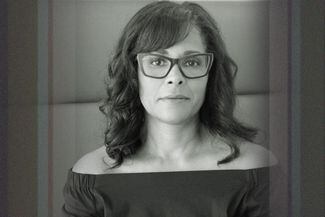
What challenging behavioral changes have you seen?
I am noticing a different level of anxiety about health and safety. More students than I expected continue to mask and appear deeply troubled by classmates who attend class while obviously sick. Students also just seem to carry a higher level of anxiety overall than before.
What about positive changes?
Greater attentiveness to class material, coming to class regularly, and staying away when they are sick. ... Students are also better at asking for help or at least talking with me about their concerns and/or struggles.
How have you modified your teaching?
I added a mental health day to the syllabus that they could use to get caught up on material and assignments in my course or to just take care of themselves. This is something that they expressed great appreciation for.
Staff Contributors
- Reporters: Melanie Burney, Oona Goodin-Smith, Kristen A. Graham, and Susan Snyder
- Editor: Cathy Rubin
- Digital Editor: Felicia Gans Sobey
- Art Director: Anton Klusener
- Photo Editor: Rachel Molenda
- Copy Editor: Richard C. Barron